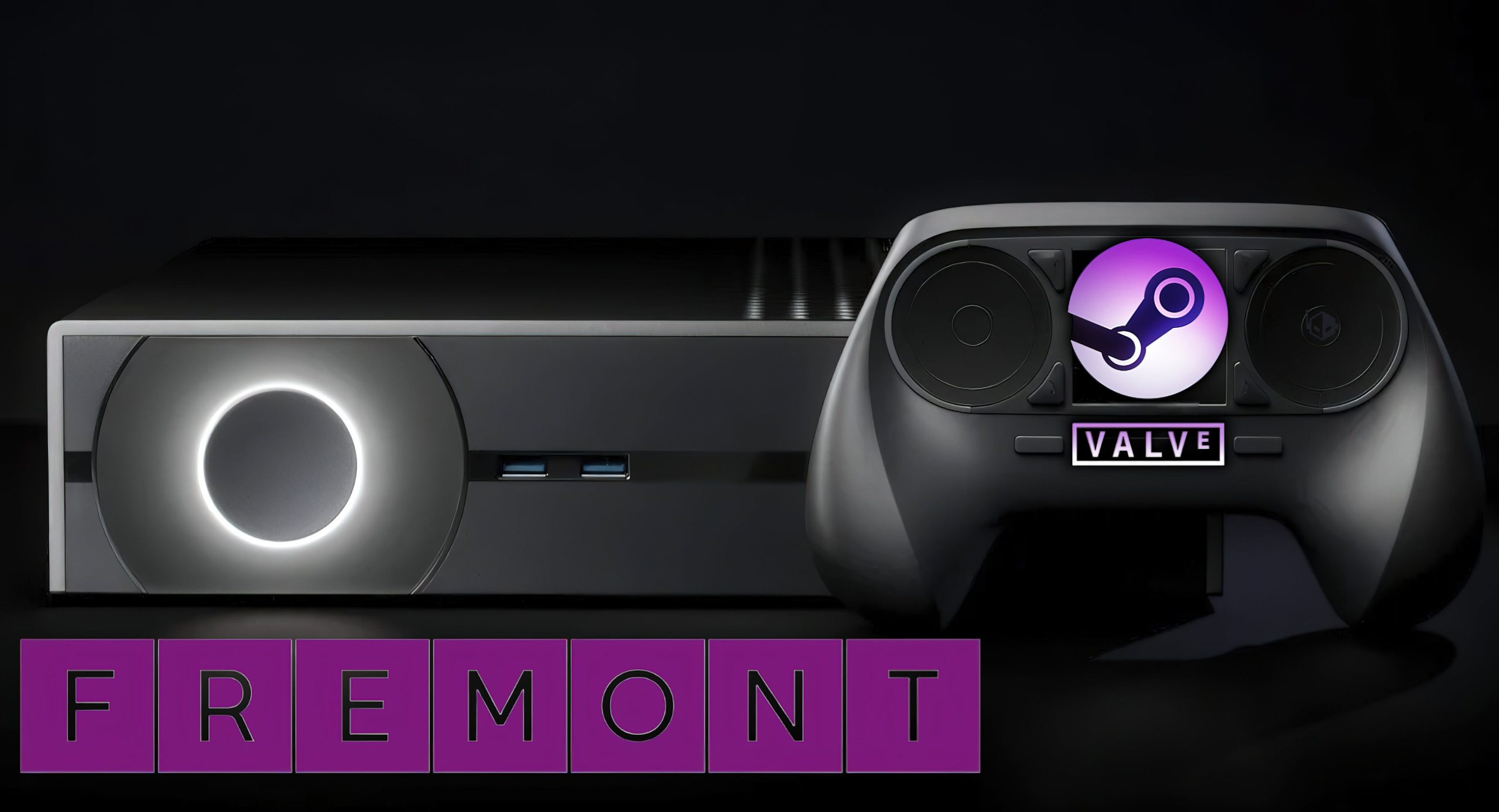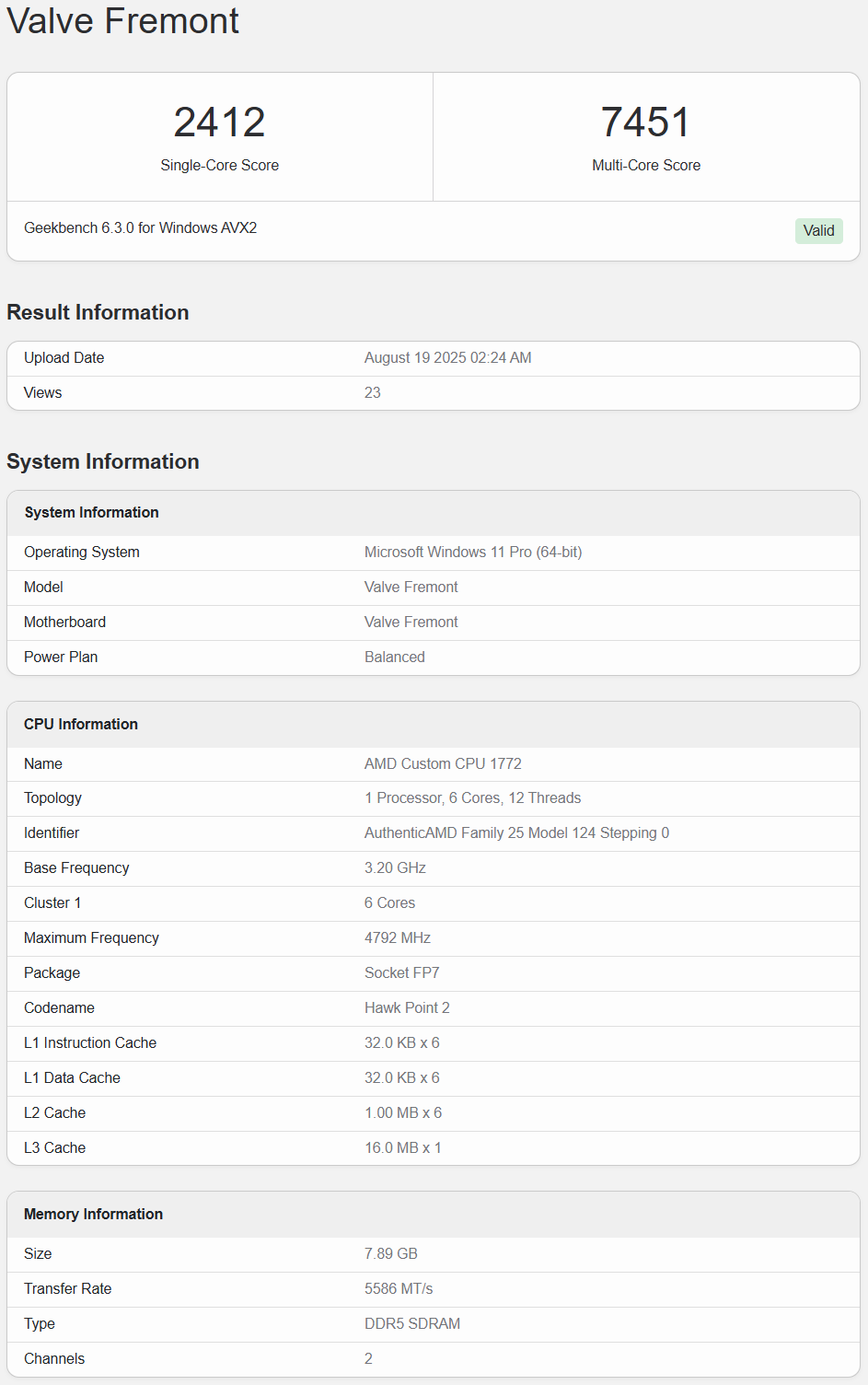Valve seems to be testing the waters once again in the hardware game with a device codenamed Fremont. Spotted in the Geekbench database, this new project features a custom AMD Hawk Point 2 SoC with 6 Zen 4 CPU cores, 12 threads, and boost clocks up to 4.8 GHz. 
Paired with a Radeon RX 7600 GPU based on RDNA 3, the specs suggest a serious leap over the Steam Deck and its OLED refresh.
On paper, the Fremont is a generational jump. The Steam Deck’s Aerith/Sephiroth chips offered 4 Zen 2 cores, 8 threads, and modest clock speeds, while the new Fremont setup delivers 16 MB of L3 cache, more bandwidth, and a far beefier graphics solution
. Geekbench results show nearly double the performance compared to the Deck OLED, even though the tested unit only had 8 GB of memory installed. That raises questions about the final retail configuration.
But history looms large. Valve’s track record with hardware is mixed at best: Steam Machines collapsed under the weight of unfinished SteamOS and weak game support, the Valve Index launched strong but quickly stagnated without meaningful updates, and several accessories were abandoned in silence. This leaves many fans wondering if Fremont will be a real console challenger or just another short-lived experiment.
Some speculate Fremont isn’t even a handheld but a living room console designed to revive the old dream of a Steam-powered box under the TV. The inclusion of DDR5-5600 memory rather than the faster LPDDR5X hints at a console-like design. If so, Valve might try to position Fremont as an affordable PC-console hybrid, subsidized by Steam’s software ecosystem – a tactic console makers like Sony and Microsoft have relied on for decades.
Still, skepticism runs high. Enthusiasts remember unfulfilled promises like the VR-ready USB-C port on Nvidia’s 20-series cards that went nowhere, or the heavily hyped VR push that fizzled once Valve realized the market wasn’t ready. With Nintendo thriving, PlayStation pushing forward with advanced hardware, and PC gamers increasingly wary of vendor lock-in, Fremont will need more than strong specs to earn lasting trust.
For now, Fremont’s specs look promising, but the real test is whether Valve commits to long-term support – something it has rarely delivered in the past.